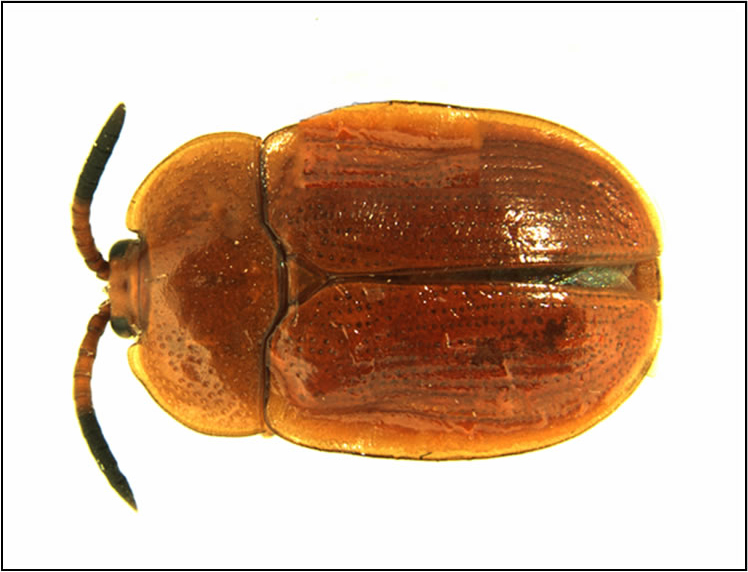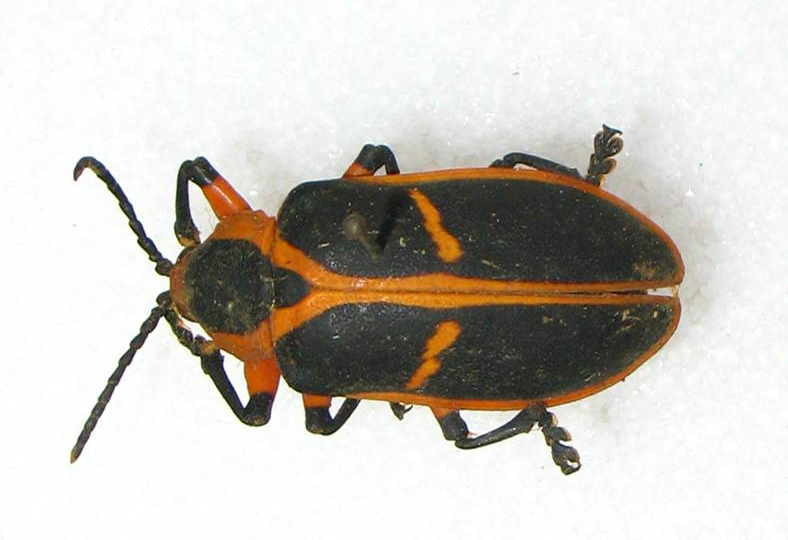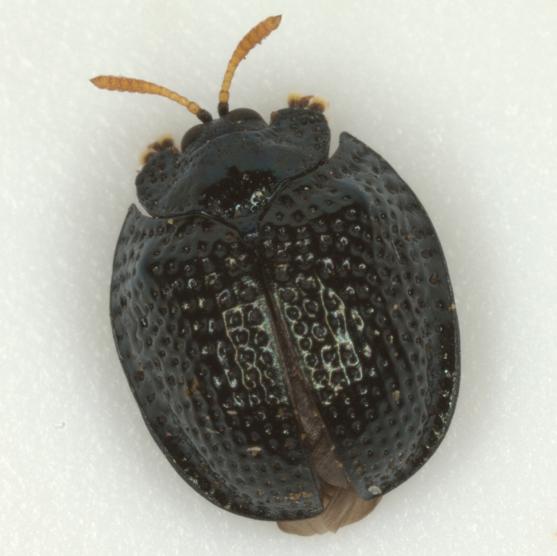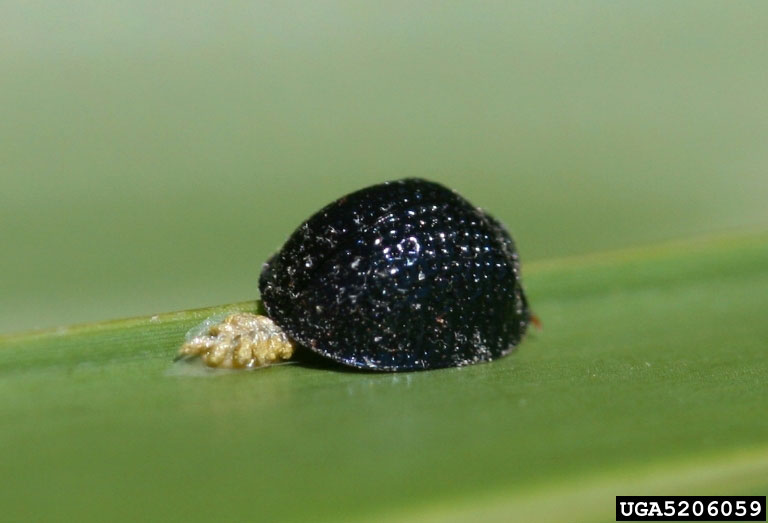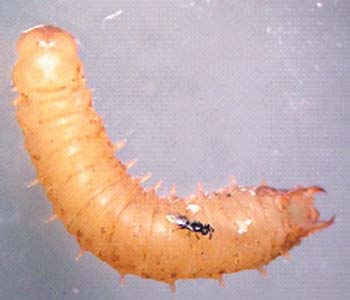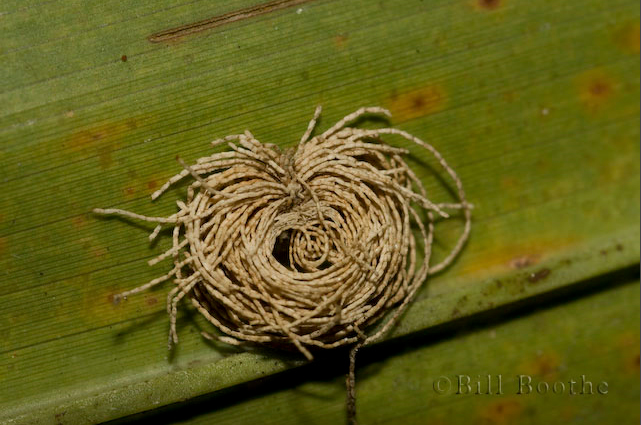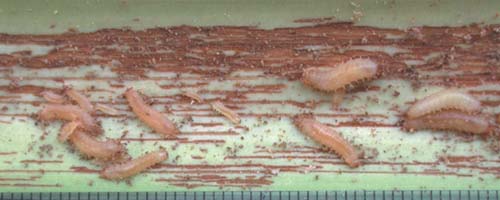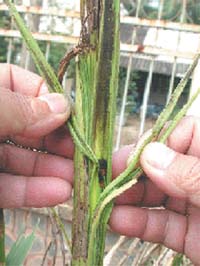Leaf Beetles
|
Coraliomelia brunnea, dorsal view; Photo by Muhammad Haseeb, Florida A&M University |
|
coconut leaf beetle, Brontispa longissima, dorsal view; Photo by Cameron Brumley, Department of Agriculture and Food, Western Australia, Pests and Diseases Image Library |
|
Demotispa elaeicola, dorsal view; Photo by Muhammad Haseeb, Florida A&M University |
|
Mecistomela marginatus, dorsal view; Photo by Muhammad Haseeb, Florida A&M University |
|
Alurnus humeralis, dorsal view; Photo by Muhammad Haseeb, Florida A&M University |
|
palmetto tortoise beetle, Hemisphaerota cyanea, adult, dorsal view; Photo by Mike Quinn, TexasEnto.net |
|
palmetto tortoise beetle, Hemisphaerota cyanea, adult female laying eggs; Photo by Johnny N. Dell, Bugwood.net |
|
coconut leaf beetle, Brontispa longissima, larva with Asecodes parasitoid wasp; Photo by Tran Tan Viet, Food and Agriculture Organization of the United Nations (FAO) |
|
palmetto tortoise beetle, Hemisphaerota cyanea, larva with frass covering; Photo © Bill and Marcia Boothe, NatureInFocus.com |
|
coconut leaf beetle, Brontispa longissima, larvae and feeding damage to coconut palm leaf; Photo courtesy of the Food and Agriculture Organization of the United Nations (FAO) |
|
leaves damaged by coconut leaf beetle, Brontispa longissima; Photo courtesy of the Food and Agriculture Organization of the United Nations (FAO) |
|
damage caused by coconut leaf beetle, Brontispa longissima; Photo courtesy of the Food and Agriculture Organization of the United Nations (FAO) |
Rank & taxon
Family Chrysomelidae
Description
The vast majority of leaf beetles that are considered pests of palms belong to the Hispinae subfamily of Chrysomelidae and are leaf miners. Adult leaf beetles range from 3-35 mm in length and are elongate or oval to orbicular in shape. They are glabrousglabrous:
without hairs
, often colorful, and the elytraelytra:
the tough, hardened forewings of beetles (singular elytron; see also hemelytra)
typically have longitudinal ridges alternating with rows of pits. The antennae are generally less than half the length of the body, filiformfiliform:
threadlike, slender, and of nearly equal diameter throughout, with all segments of nearly equal size
, and typically held in a V position. The tarsitarsi:
the portion of insect legs distal to the tibia (singular tarsus)
of this family generally appear to have four tarsomerestarsomeres:
the segments of the tarsi
, but actually have five; the fourth segment is usually hidden by the lobes of the third. Notably, in the Hispinae, the fourth segment is fused to the fifth, so there actually are only four tarsomerestarsomeres:
the segments of the tarsi
. Hispine larvae are dorsoventrally flattened with prognathousprognathous:
with a more or less horizontal head with mouthparts at the front
mouthparts, as compared with other chrysomelid larvae which are elongate and curved, with a deflexeddeflexed:
bent or turned downward at a sharp angle
head.
Distribution
Worldwide, over 2,500 genera and 35,000 species (subfamily Hispinae represents 170 genera and 3,000 species worldwide, primarily restricted to tropical and subtropical habitats)
Biology/life cycle
Chrysomelids are strongly associated with plants, and are therefore primarily terrestrial. Nearly all members of the family are phytophagousphytophagous:
feeding upon plant matter
, and many are considered pests. Leaf beetles are usually highly host-specific. Members of the subfamily Hispinae are almost exclusively found on monocotylendous hosts, with many having a strong preference for palms. Adult females typically lay a relatively small number of eggs in a small cavity created for the purpose, and cover it with a cap or shield of fecal matter or plant fibers. When the larvae hatch, they enter the leaf through the cavity, and typically go through three instars before pupating. Hispine larvae, as leaf miners, feed between the epidermal layers of the leaf, forming galleries, or leaf mines. Adults typically feed on the leaves as well, often preferring younger leaves.
Hosts
Palms: a wide variety of palms, including Cocos nucifera (coconut palm) and Elaeis guineensis (African oil palm)
Other: subfamily Hispinae may be found on a wide variety of other monocotyledonousmonocotyledonous:
(of a flowering plant) having a single cotyledon in the seed, as in palms, grasses, and lilies
hosts but is rarely found on dicotyledons; the other subfamilies may be found on a variety of dicotyledonous plants
Representative taxa on palms
The coconut leaf beetle (Brontispa longissima) is one of the most damaging pests on coconut palms (Cocos nucifera), but may also infest over 20 other species of palm. It feeds on young leaves, causing damage to seedlings as well as mature palms. It is a serious pest in coconut palm growing regions throughout the Pacific.
The palmetto tortoise beetle (Hemisphaerota cyanea) occasionally causes feeding damage on palms in the southeastern US, particularly saw palmetto (Serenoa repens). The larva extrudes a dense frassfrass:
the mixture of plant and fecal material left behind by many phytophagous insects
shield to protect itself from predators.


-mhaseeb.jpg)

